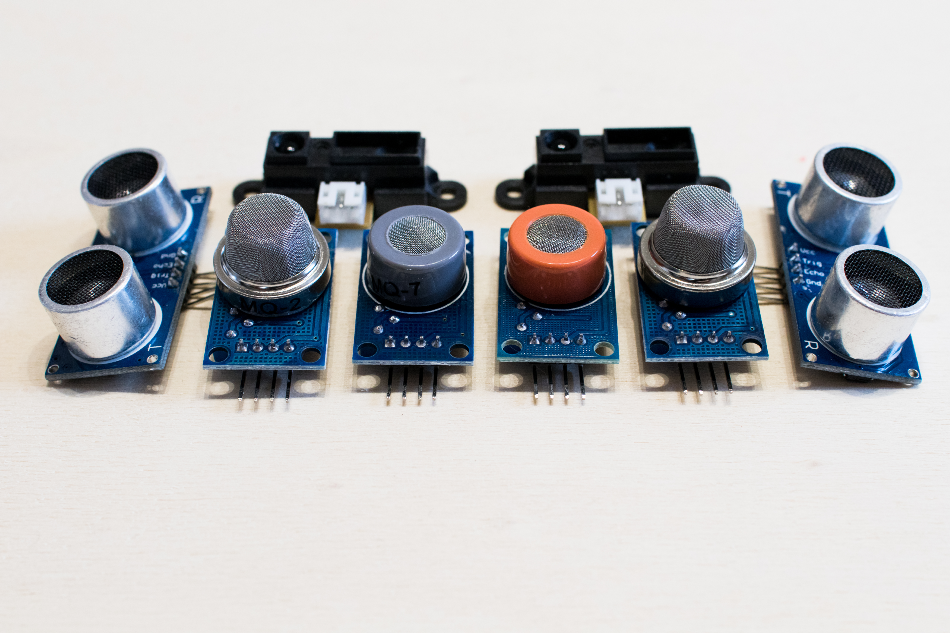
Paolo De Gasperis / Shutterstock
Thin film gas sensors enable us to not only detect but to differentiate between chemical elements including alcohol, benzene, and carbon monoxide. This is not only essential in monitoring environmental conditions but also in protecting us from life-threatening events.
Thin Film Gas Sensors
A thin film sensor can serve as an essential aid in detecting often toxic levels of gases present in a local environment. The level of sensor sensitivity depends entirely on the method used to produce thin films. Production methods include, but are not limited to), chemical vapor deposition and reactive evaporation.
Today, the majority of thin film gas sensors are made up of Titanium Dioxide (TiO2) films of less than 10 nanometers (nm). TiO2 is widely used because of its diverse application in modern-day life. In its thin film form, it can serve as an n-type semi-conductor; a process widely studied for photocatalysis and gas sensing (example application: Toxic gases).
Interestingly, TiO2 is also applied to solid-state devices including optical applications like solar cells and corrosion-protective coatings (eg. metals on cars, buildings, etc.)
Impact of Thin Film Gas Sensors
The majority of the population are often unaware of the impact of thin film gas sensors on their lives, and it is a field of science that operates away from the public limelight in relative obscurity.
Yet thin film sensors often have a dramatic impact on things many people take for granted on a daily basis. Let us use the vapor deposition method of thin film sensor production as an example.
TiO2 films of less than 10 nm are deposited by atomic layer deposition (ALD) to create a highly sensitive element for gas sensors. The ALD technique allows scientists to produce uniformly thin films with a thickness control of sub-nm precision.
ALD Technique
This method allows the production of films made from a variety of different materials. The ALD is one technique that allows us to monitor and control toxic gas levels in an external environment (eg. areas prone to volcanic activity, city centers, etc.).
TiO2 thin films have also been investigated and tested as gas sensors for carbon monoxide (CO) detection. Both the health and commercial benefits of such detection represent a huge impact on industrialized society. CO thin film detectors using this technique are deposited by ultrasonic spray pyrolysis beginning from titanium oxyacetilacetonate onto soda-lime glass substrates.
The compositional and structural properties of TiO2 films are found using both x-ray and electron scanning microscopy techniques. When thin films were deposited above 400 degrees celsius, researchers discovered the thin films to be polycrystalline in structure. The polycrystalline structure and its x-ray pattern fit well to the TiO2 structure. Thin films deposited at a lower temperature showed amorphous structures.
How does this Help in the Detection of CO?
Analyzing the sensitivity of TiO2 is done by varying both the thickness and temperature with sensor response then measuring for CO concentrations between 1-300 parts per million at different temperatures; usually between 100-300 degrees celsius.
The highest sensitivity was obtained for thin films deposited at a substrate temperature of 350 degrees celsius. This method of using TiO2 thin film sensors has shown extremely positive and accurate results in detecting CO. Once refined, this method of TiO2 detection sensor could be included in the next wave of thin film gas sensors.
Conclusion
Thin film gas sensors represent one of the most positive leaps forward in detection in the past 50 years. Printing sensors directly onto changeable-flexing surfaces (eg. skin, clothes) can allow us to monitor and detect things we might not otherwise be able to.
Having the ability to monitor potentially dangerous areas worldwide with sensors at mere nanometers in thickness is fantastic. However, the more exciting application of this technology could allow us to explore and monitor the more extreme environments we have not previously been able to access.
Sources
Disclaimer: The views expressed here are those of the author expressed in their private capacity and do not necessarily represent the views of AZoM.com Limited T/A AZoNetwork the owner and operator of this website. This disclaimer forms part of the Terms and conditions of use of this website.